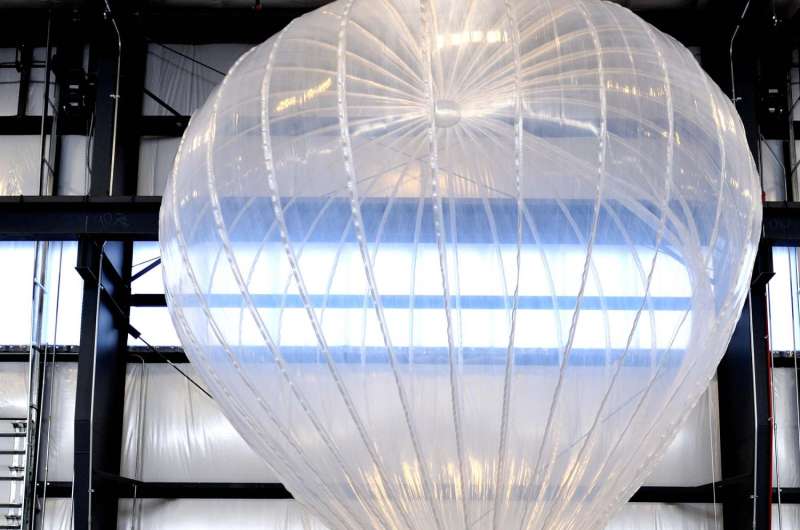June 26, 2017 report
World View Enterprises looking to popularize use of stratospheric balloons

(Phys.org)—World View Enterprises bills itself on its website as a "full-service commercial launch provider"—it offers to take various types of equipment up to the edge of space using a balloon for a short amount of time for less money than NASA charges. The newly burgeoning field of balloon science is the topic of a Feature piece by journalist Adam Mann for the journal Science—he takes a closer look at the work done by the team at World View and others who are looking to expand the field.
Sending balloons up into the air to learn more about what is going on down here on Earth has a very long history, most of which includes monitoring war or the weather. But over the past few decades, as electronic equipment has grown smaller, the demand for sending up all manner of new devices has grown—and that, Mann notes, has given rise to companies such as World View.
NASA is a big player in the balloon business, too—it has giant balloons that take both its own equipment and that of others (for a steep price) way above the Earth. But World View has one advantage over the balloons offered by NASA: It can hover over one spot rather than drifting with stratospheric winds. This is possible because the wind blows in different directions at different altitudes. Engineers at World View use air pumps to cause their balloons to rise or fall to meet wind currents moving in desired directions and thus maintain position. World View has another advantage, as well—price. NASA charges on the order of $2 million to $3 million per trip, whereas World View charges just a few hundred thousand dollars. But the company still needs to play catch-up in other ways. Currently, it is only able to keep its balloons aloft for approximately 12 hours and can only carry a payload of 50 kg, compared to NASA's 3600kg.
Still, as Mann notes, high-altitude balloon science is on the verge of becoming something much bigger. Balloons that can remain in place could prove valuable for tracking hurricanes or events like flash floods, for example. They could also measure the impact of forest fires or provide farmers with soil moisture readings or overall views of their farms. Others see the high-flying balloons as a platform for studying the stars, or perhaps more importantly, the sun—to warn of solar flares. Mann suggests as demand for balloons rises, options will increase and prices will fall, opening even more opportunities.
More information: Trial balloons, Science 23 Jun 2017: Vol. 356, Issue 6344, pp. 1227-1229. DOI: 10.1126/science.356.6344.1227 , science.sciencemag.org/content/356/6344/1227
Summary
Stratospheric balloons are a low-cost way to get above 99% of the atmosphere. Payloads lifted that high have wide views of Earth and clear views of the stars. For decades, NASA has launched a handful of stratospheric balloons every year. Although they float for months, they drift at constant altitudes. Now, upstart commercial companies like World View are launching smaller balloons that can remain in place by surfing stratospheric winds. Just as companies like SpaceX and Blue Origin are building cheap rockets in an effort to commercialize low-Earth orbit, so, too, are these balloon companies attempting to privatize the stratosphere. Scientists are eager to reap the benefits.
Journal information: Science
© 2017 Phys.org




















